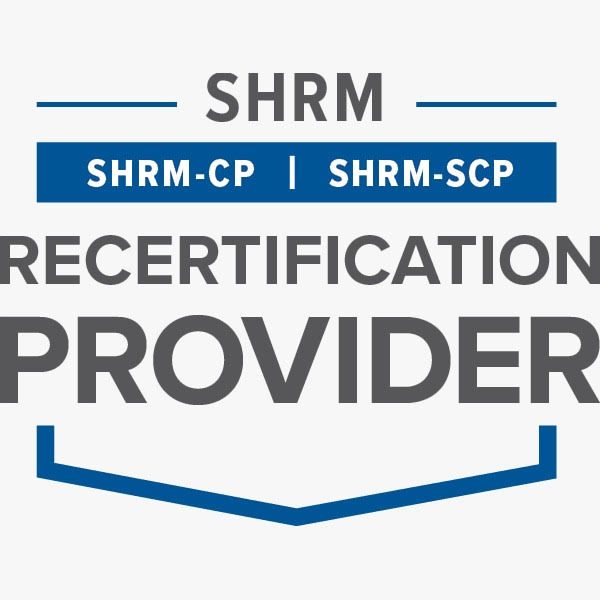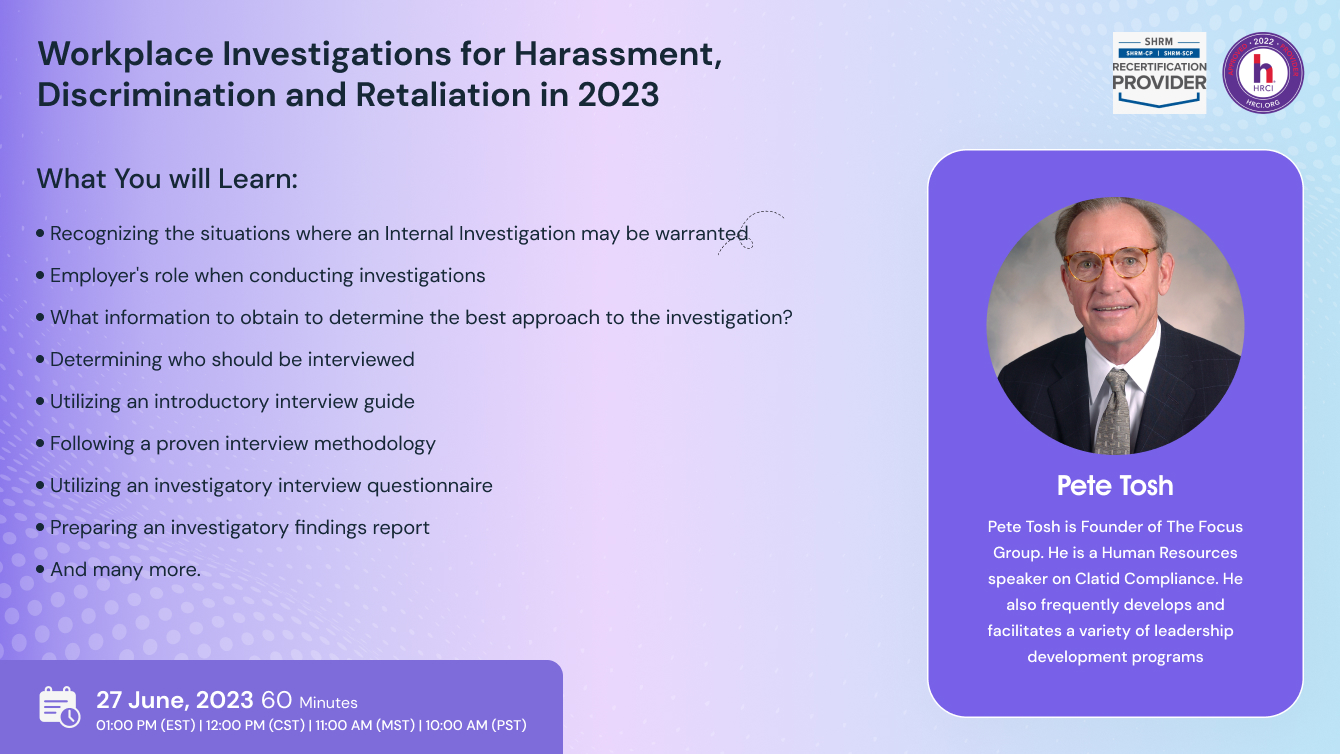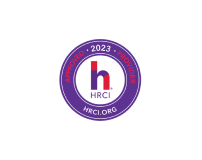How to Conduct Workplace Investigations in 2023
Internal investigations are fact-finding initiatives conducted to uncover the truth about alleged misconduct. This must be done without compromising the relationship with employees or unnecessarily damaging anyone's reputation. All of which requires planning, consistent execution, analytical skill, and an understanding of the legalities involved.
Employers are legally mandated to investigate harassment, discrimination, retaliation, safety, and certain other types of complaints. Good investigators first create a plan that includes:
● What is the objective?
● Who will be interviewed?
● What will be investigated?
● What evidence needs to be collected?
Workplace investigations are crucial when it comes to establishing a safe and welcoming work environment. However, these investigations are often complex and can involve navigating sensitive topics and disputes.
A poorly conducted internal investigation can cost a company financially and damage its reputation, not to mention the reputation of the person tasked with overseeing such a probe. Some of the common mistakes made include:
● Failing to plan
● Delaying an investigation
● Not remaining objective
● Using aggressive interviewing tactics
● Not conducting a thorough investigation
● Failing to reach a conclusion with a written report
Conducting workplace investigations is one of the most challenging duties that HR professionals and other managers must face due to today’s workforce demographics, new employment laws, employees being more aware of their rights – a quagmire of potential landmines - and many managers not trained to do so.
Employers must demonstrate fairness when conducting workplace investigations. Investigations should be thorough and well-documented before an employer takes any action. Additionally, effective workplace investigations need to be guided by the following principles:
● Neutrality - HR and other personnel involved in an investigation must be detached from an incident, remain objective, have no personal stake in the outcome and give all employees involved the opportunity to provide their version of the incidents.
● Thoroughness - To ensure that the proper decision is made, investigators must be thorough in uncovering all the necessary information while asking detailed questions during interviews.
● Timeliness - Once an investigation is triggered, investigators must act promptly to avoid further acts of wrongdoing with any disciplinary action administered in a timely manner to avoid legal issues.
What You will Learn
● Recognizing the situations where an Internal Investigation may be warranted
● Employer's role when conducting investigations
● What information to obtain to determine the best approach to the investigation?
● Determining who should be interviewed
● Utilizing an introductory interview guide
● Following a proven interview methodology
● Utilizing an investigatory interview questionnaire
● Closing the interviews
● Preparing an investigatory findings report
Why You Should Attend
An internal investigation is a formal inquiry to determine whether workplace policies or regulatory practices have been violated. Investigations can follow a:
● a complaint
● allegation
● suspicion of misconduct
● fraud
● harassment accusations
● or many other reasons covered by federal, state and/or local employment laws
The goal of any internal investigation is to obtain a straightforward view of the facts:
● what happened
● when it happened
● who was responsible
● who may have been harmed
● what actions may be necessary to prevent the alleged wrongdoing from reoccurring
Internal investigations assist organizations in gathering information, fashioning defences, and crafting remedies. Specifically, internal investigations are useful for organizations to identify where there are needs for remediation.
The final investigative report should include:
● The incident investigated, with dates
● The individuals involved
● Key factual findings
● Applicable employer policies
● Interviewees’ statements
● Conclusions
● Issues that could not be resolved
● Employer’s follow up action
It is critical to investigate an allegation quickly. Stretching an investigation out over a lengthy period tells employees the alleged misconduct is not important. As time goes by, it becomes more difficult to collect evidence and get witnesses to talk, details are forgotten and documents disappear.
If the organization terminates or disciplines an employee and that person files a lawsuit or complaint, the investigation report will be critical in protecting the company in court. While every complaint is unique, having a well-defined, consistent process in place can ward off future lawsuits.
Who will Benefit
● HR Managers
● Any line managers
● HR Professionals
● Supervisors
● Company Leadership

Pete Tosh
Pete Tosh is the Founder of The Focus Group, a management consulting and training firm that assists organizations in sustaining profitable growth through implementing strategic HR initiatives, maximizing leadership effectiveness, and strategic planning. He collaborates with Clatid Compliance to provide practical training and guidelines on Human Resources, leadership, and growth in business.
Pete has worked closely with the leadership teams of organizations such as Exxon, Brinks, EMC, State Farm, Marriott, N.C.I. YKK and Freddie Mac. He holds a B.A. degree in Psychology from Emory and Henry College and Master's degrees in both Business Administration and Industrial Psychology from Virginia Commonwealth University. He is also co-author of Leading Your Organization to the Next Level: the Core Disciplines of Sustained Profitable Growth. His firm has provided consulting and training services to manufacturing and service organizations across the U.S., Canada, Europe, and the Middle East.

SHRM-
Standeagle is recognized by SHRM to offer Professional Development Credits (PDCs) for the SHRM-CPSM or SHRM-SCPSM.
This program is valid for 1.0 PDCs for the SHRM-CPSM or SHRM-SCPSM. For more information about certification or recertification, please visit - portal.shrm.org.

HRCI -
This webinar has been approved for 1.0 HR (General) re-certification credit hours toward California, GPHR, HRBP, HRMP, PHR, and SPHR recertification through the HR Certification Institute.
The use of this seal is not an endorsement by the HR Certification Institute of the quality of the activity. It means that this activity has met the HR Certification Institute’s criteria to be pre-approved for re-certification credit.

ACCREDITATIONS


